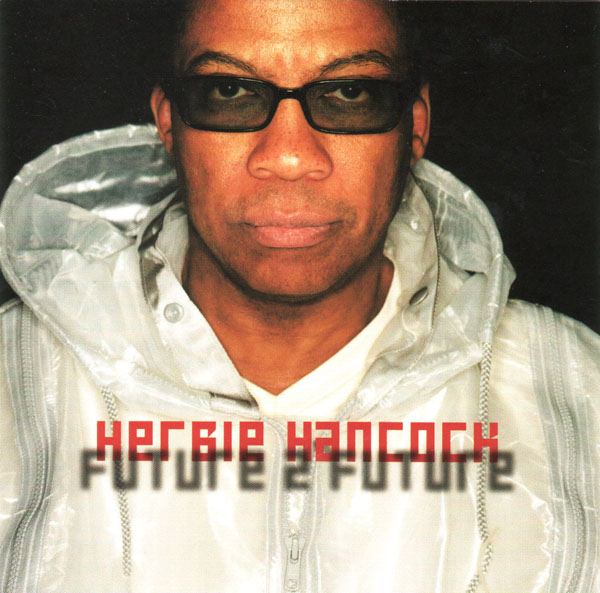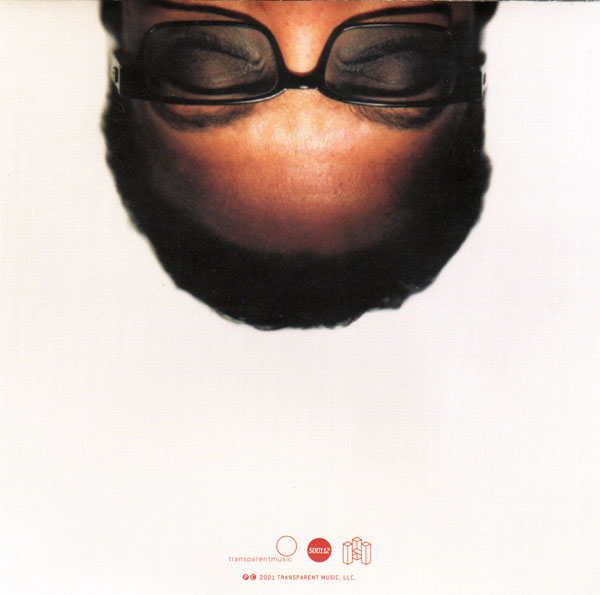HERBIE HANCOCK




1/ Wisdom (Hancock) 1.08
2/ Kebero Part I (Hancock,Laswell,Craig,GiGi) 3.27
3/ The Essence (Hancock,Khan,Laswel) 4.48
4/ This Is Rob Swift (HH,Swift,Laswell,DeJohnette) 6.54
5/ Black Gravity (Simpson,Hancock,Laswell) 5.25
6/ Tony Williams (HH,Williams,Laswell,Bryant) 6.04
7/ Ionosphere (Hancock,Kale,Laswell) 4.16
8/ Alphabeta (Hancock,Laswell) 5.27
9/ Be Still (Hancock,Laswell) 4.40
10/ Virtual Hornets (Hancock,Laswell) 8.48
11/ Kebero Part II (Hancock,Laswell,Craig,GiGi) 4.59
12/ The Essence (DJ Krush Remix) (Hancock,Khan,Laswell) 5.48
Created at Orange Music
Additional Recording at Kampo Studios, NYC and JSM Studios, NYC
Engineering: Robert Musso
Assistant Engineer: James Dellatacoma
Engineers at Garage Sale: Khaliq-O-Vision and Dave Hampton
Track 9 mixed by Darrell Diaz at M4 Group International
Track 12 remix and additional production by DJ Krush
Track 12 recorded by Toshihiko Miyoshi
Assisted by Youhei Ichikawa at HAL Studio
Produced and Directed by Bill Laswell and Herbie Hancock
Additional Production: Darrell Diaz
Mastered by Michael Fossenkemper at Turtle Tone Studios, NYC
Additional Mastering at Sterling Sound, NYC
Elenni Davis-Knight (1): voice; Herbie Hancock: keyboards; Carl Craig (2,11): programming,
beats; Bill Laswell (except 1,12): electric bass; GiGi (2,11): vocals; Chaka Khan
(3): vocals; Charnett Moffett (3,9,10): acoustic bass; Karsh Kale: drums (3,7), program
beats (7); Grandmixer DXT (3): turntable; Jack DeJohnette (4,8,9,10): drums; Rob Swift (4):
turntables & programming; A Guy Called Gerald (5): programming & beats; Dana Bryant (6):
vocals, words; Tony Williams (6): drums; Wayne Shorter: tenor sax (6,10), soprano sax (9).
2001 - Transparent Music (UK), HERBIE LP1 (2x12")
2001 - Transparent Music (US), 505211-1 (2x12")
2001 - Transparent Music/Victor Entertainment (Japan), VICP-61354 (CD)
2001 - Transparent Music (USA), 500112 (CD)
2001 - Transparent Music (USA), HERBIE CD1 (2CD)
Note: Track 12 is featured on the Japanese release only.
Hancock is more of a magician than a musician. He is a remarkably talented pianist, with a serious knack for lyrical playing (check out the Miles Davis Quintet's Miles Smiles), a passion for exploration and experimentation (he was an engineering student), and a dirty urge to make music so funky it would embarrass your parents more than that time grandpa showed up to church drunk.
But every time a magician rises and says, 'For my next trick...' I am filled with an inescapable dread. I dread that in the process of cutting women in half or being set on fire or being submerged in water, something will go horribly wrong.
Future 2 Future is not a bloody and hewn lovely assistant or an asphyxiated David Copperfield; it's the musical equivalent of balloon poodle.
Well, Hancock does have a few surprising doves in his hat.
A variety of sub-genres falling under 'electronica' make up the album's distinct tracks. Hancock and a fleet of rotating techno-drones pump out the trip-hop, turntablism, synth-augmented 'classic jazz' and drum and bass that spread across 11 tracks.
Now, I suspected that all of these styles would come to Hancock someday, but the one I feared most was 'drum and bass'. There are more no-talent drum and bass acts out there than three-card monty dealers in New York City. The style was one that got mined quickly, and hasn't surpassed its reputation of being the recycling of tired beats, with a few notable exceptions. Would Hancock fall prey to the idea of laying piano and synth solos over weary beats and calling it the wave of the future?
Sadly, he pushes weak beats as far as they can possibly go. The vocals definitely add to the tracks, especially Chaka Khan's ear-pleasing turn on 'The Essence'. Hancock’s solos are still dazzling and unique affairs. It's just that they don't belong here, in the 'future' that Hancock is pursuing. A lyrical piano solo laid over tweaky, edgy drum and bass comes off sounding like the way you looked when you stood up for yourself and tried to get your Planet of the Ewoks pencil case back from the fourth grade bully Johnny 'The Big Head' Bighead.
The standout track is easily the opener. An engagingly mystical tune helmed by Carl Craig finds a perfect balance between the techno auteur and the jazz great. Craig’s experience both as a classic techno experimenter and his work with the jazzy Innerzone Orchestra come through here. His and Hancock’s respective talents are subdued in fantastic tribal and pseudo-tribal voices, the overall effects of which are to spook the hell out of you.
The required DJ track, 'This is Rob Swift' featuring DJ Rob Swift, is solely an athletic excursion into turntablism, with Herbie dropping funky organ lines under show-off scratching of some of the most overused samples ever.
The remaining several tracks are more straightforward jazz excursions. None of these pushes any boundary or brings any sort of sound into the mix that might be considered futuristic. Tony Williams and Virtual Hornets are delightful, subtle tracks with a light amount of electronic augmentation, but that's not what we’re looking for Herbie. You promised us the future and for some reason I didn’t imagine any live drummers in the future.
This is the album where Hancock himself is on the cover wearing some trendy translucent-white windbreaker you'd expect to see on the dude who just spun a crazy trance set and can't seem to stop his eyeballs from twitching. Let's be honest, we're paying to see Herbie break boundaries and bring electronic music to the stuffy world of jazz purists (though honestly I'd pay to see the man hum the bass line from 'Chameleon' while washing his hands in the men's room). The man has done everything from traditional jazz to funk to old-school (new school at the time, of course) hip-hop to early-90's jazz-rap to Gershwin covers to the theme song from Fat Albert.
Don’t get me wrong, 'Rockit' was a great (revolutionary, perhaps) tune and even inspired my five minute obsession with being a breakdancer. Hancock was really on to something when he released the album Future Shock in 1983, but it didn’t age well. When Hancock calls his new album Future 2 Future, I expect a look inside his crystal ball at what’s coming down the line for us all to hear. Unfortunately for this time around, in his quest for the future, Herbie seems to have been left behind.
Amandeep Loomba (courtesy of the
Herbie Hancock is one of the most sampled artists of all time. From his Miles Davis collaborations of the fifties and sixties through the fusions of the seventies (check Headhunters) to Rockit in 1983 and Dis is Da Drum is the mid-nineties.
Future 2 Future is fantastic, a culmination of spacejazz-electronica experiments from the twentieth to thirtieth centuries.
'The Essence', featuring Chaka Khan on vocals, is already a dancefloor classic; the twelves have remixes by the likes of LTJ Bukem whose generic influence on the stylistics of the programming on this album are wholly evident.
It's totally future jazz. Head music which has been co-produced by Royal Festival Hall virtual resident, Bill Laswell. They've brought in turntablist Rob Swift for the beats and scratching, A Guy Called Gerald for house-rays, Carl Craig for Shades of Rhythm-type astronomy-techno and DXT for the good ol' musical turntabling.
Karsh Kale brings in the world house element, Wayne Shorter comes in on sax and there's the obligatory cameos from others dons throughout this masterpiece.
The album is subtle and it feels like the challenges have been faced in its making, leaving the listener free to enjoy the ride. Music for pleasure.
Kirsty Allison (courtesy of the